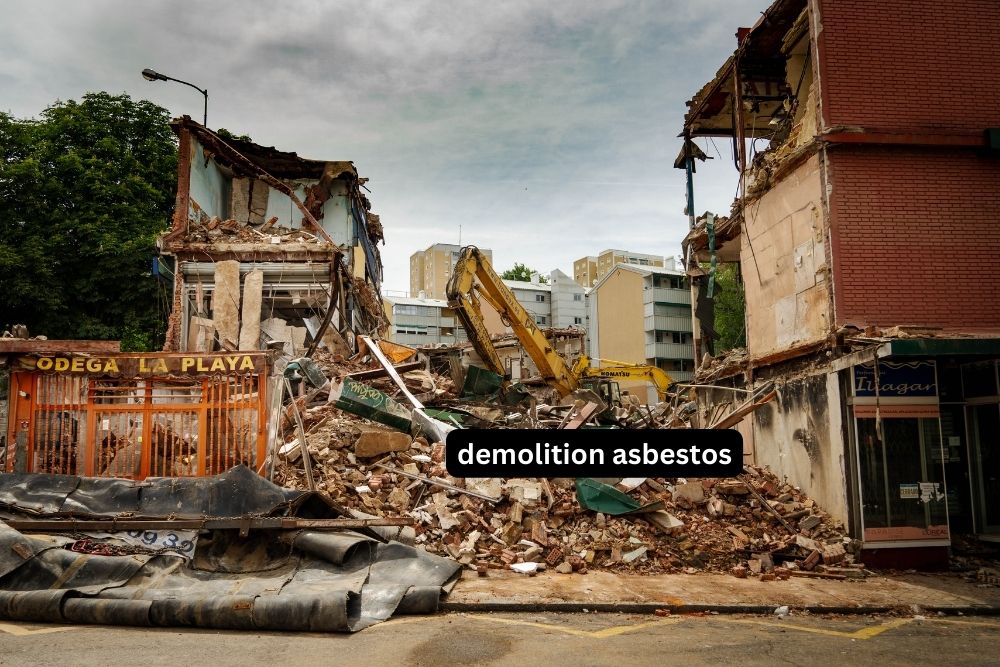
Demolition work often involves tearing down old structures, which can pose significant health risks if asbestos-containing materials (ACMs) are present. Asbestos, once widely used in construction, is now recognized as a hazardous material. This guide delves into the dangers of asbestos during demolition asbestos regulatory requirements, and safe removal practices.
What is Asbestos?
Definition and History
- Definition: Asbestos is a group of naturally occurring fibrous minerals known for their heat resistance, strength, and insulating properties.
- Historical Use: Widely used in construction materials like insulation, roofing shingles, and floor tiles until its health risks became apparent.
Health Risks
- Prolonged exposure to asbestos fibers can lead to severe illnesses, including:
- Asbestosis: Scarring of lung tissue.
- Mesothelioma: A rare and aggressive cancer.
- Lung Cancer: Increased risk due to inhalation of fibers.
Why is Asbestos a Concern in Demolition?
Prevalence in Older Buildings
- Buildings constructed before the 1980s often contain ACMs.
- Common areas include:
- Pipe insulation
- Floor tiles
- Ceiling panels
- Fireproofing materials
Disturbance During Demolition
- Demolition activities such as drilling, cutting, or breaking can release asbestos fibers into the air.
- Airborne fibers pose a significant inhalation risk to workers and nearby residents.
Legal and Regulatory Framework
Regulations Governing Asbestos
- International Standards: Organizations like the World Health Organization (WHO) advocate for global asbestos bans.
- Country-Specific Laws:
- United States: Occupational Safety and Health Administration (OSHA) and Environmental Protection Agency (EPA) regulations.
- United Kingdom: Control of Asbestos Regulations 2012.
- Australia: Work Health and Safety Regulations.
Permits and Compliance
- Asbestos surveys and permits are mandatory before demolition begins.
- Failure to comply can result in heavy fines and legal consequences.
Steps to Handle Asbestos in Demolition
1. Pre-Demolition Survey
- Conduct an Asbestos Inspection to identify ACMs.
- Engage certified asbestos professionals for the assessment.
2. Asbestos Removal Plan
- Develop a removal strategy based on the survey findings.
- Ensure the plan adheres to local regulations and guidelines.
3. Containment and Control
- Use containment methods like sealing off work areas.
- Utilize negative pressure enclosures to prevent fiber dispersion.
4. Safe Removal and Disposal
- Employ trained and certified asbestos abatement contractors.
- Use wet methods to suppress dust and prevent fibers from becoming airborne.
- Dispose of ACMs in approved hazardous waste facilities.
5. Post-Removal Inspection
- Conduct air quality testing to confirm safe conditions.
- Obtain clearance certificates before proceeding with demolition.
Protecting Workers and Communities
Worker Safety Measures
- Personal Protective Equipment (PPE):
- Respirators with HEPA filters.
- Disposable coveralls and gloves.
- Training: Workers should receive comprehensive asbestos handling training.
- Monitoring: Regular health check-ups for early detection of asbestos-related diseases.
Community Safety
- Notify local authorities and residents about demolition activities.
- Establish buffer zones to limit public exposure.
Challenges in Asbestos Management
Unidentified ACMs
- Hidden ACMs can be unexpectedly discovered during demolition.
Cost Implications
- Asbestos removal can significantly increase project costs.
Technical Difficulties
- Demolishing structures with extensive ACMs requires advanced techniques and expertise.
Technological Advances in Asbestos Management
Detection Technologies
- X-ray fluorescence (XRF) and infrared spectroscopy for rapid asbestos identification.
Automated Equipment
- Remote-controlled machinery minimizes worker exposure during removal.
Conclusion
Demolition projects involving asbestos require meticulous planning and strict adherence to safety protocols. Asbestos is a hazardous material, and improper handling can have severe health, legal, and financial repercussions. By conducting thorough pre-demolition surveys, using certified professionals, and following regulatory guidelines, the risks can be effectively mitigated. The protection of workers, the public, and the environment should remain the top priority in all demolition activities involving asbestos.






Leave a Reply